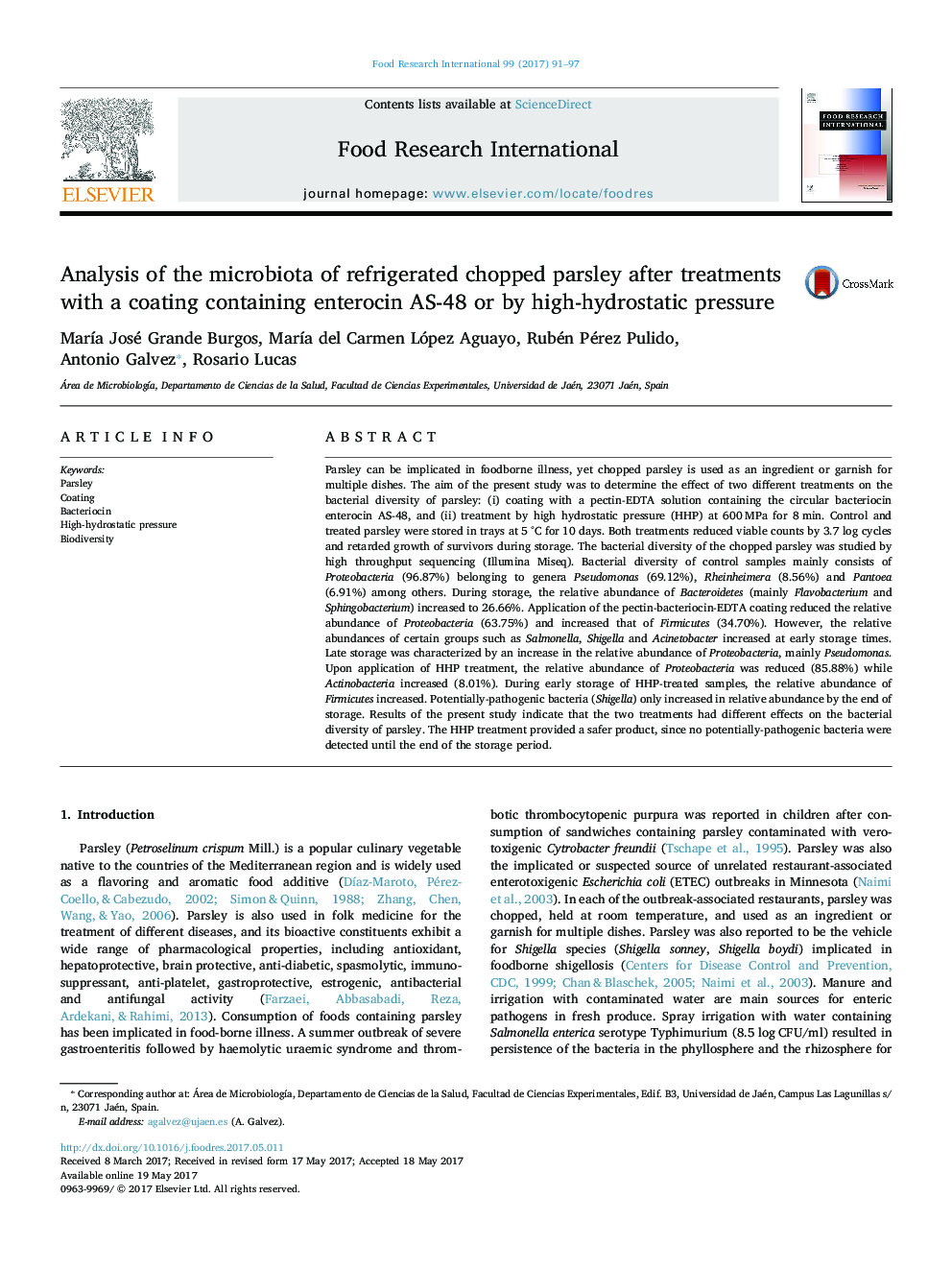| کد مقاله | کد نشریه | سال انتشار | مقاله انگلیسی | نسخه تمام متن |
|---|---|---|---|---|
| 5768081 | 1413213 | 2017 | 7 صفحه PDF | دانلود رایگان |

- Chopped parsley treated with an activated coating or HHP was refrigerated stored.
- Both treatments reduced microbial load by 3.7 logs.
- Parsley contained mainly Proteobacteria â«Â Bacteroidetes > Firmicutes > Actinobacteria.
- The treatments applied differentially affected microbial populations in parsley.
Parsley can be implicated in foodborne illness, yet chopped parsley is used as an ingredient or garnish for multiple dishes. The aim of the present study was to determine the effect of two different treatments on the bacterial diversity of parsley: (i) coating with a pectin-EDTA solution containing the circular bacteriocin enterocin AS-48, and (ii) treatment by high hydrostatic pressure (HHP) at 600 MPa for 8 min. Control and treated parsley were stored in trays at 5 °C for 10 days. Both treatments reduced viable counts by 3.7 log cycles and retarded growth of survivors during storage. The bacterial diversity of the chopped parsley was studied by high throughput sequencing (Illumina Miseq). Bacterial diversity of control samples mainly consists of Proteobacteria (96.87%) belonging to genera Pseudomonas (69.12%), Rheinheimera (8.56%) and Pantoea (6.91%) among others. During storage, the relative abundance of Bacteroidetes (mainly Flavobacterium and Sphingobacterium) increased to 26.66%. Application of the pectin-bacteriocin-EDTA coating reduced the relative abundance of Proteobacteria (63.75%) and increased that of Firmicutes (34.70%). However, the relative abundances of certain groups such as Salmonella, Shigella and Acinetobacter increased at early storage times. Late storage was characterized by an increase in the relative abundance of Proteobacteria, mainly Pseudomonas. Upon application of HHP treatment, the relative abundance of Proteobacteria was reduced (85.88%) while Actinobacteria increased (8.01%). During early storage of HHP-treated samples, the relative abundance of Firmicutes increased. Potentially-pathogenic bacteria (Shigella) only increased in relative abundance by the end of storage. Results of the present study indicate that the two treatments had different effects on the bacterial diversity of parsley. The HHP treatment provided a safer product, since no potentially-pathogenic bacteria were detected until the end of the storage period.
187
Journal: Food Research International - Volume 99, Part 1, September 2017, Pages 91-97